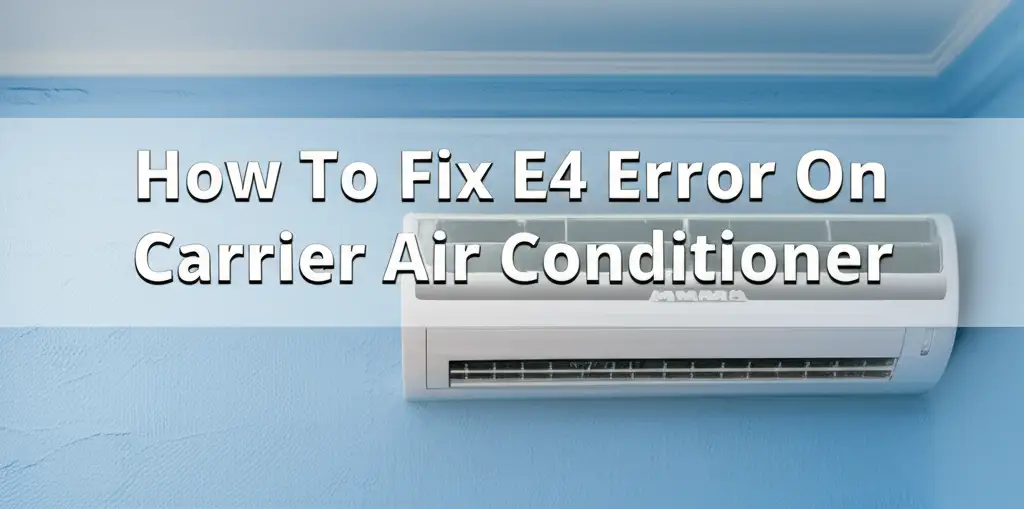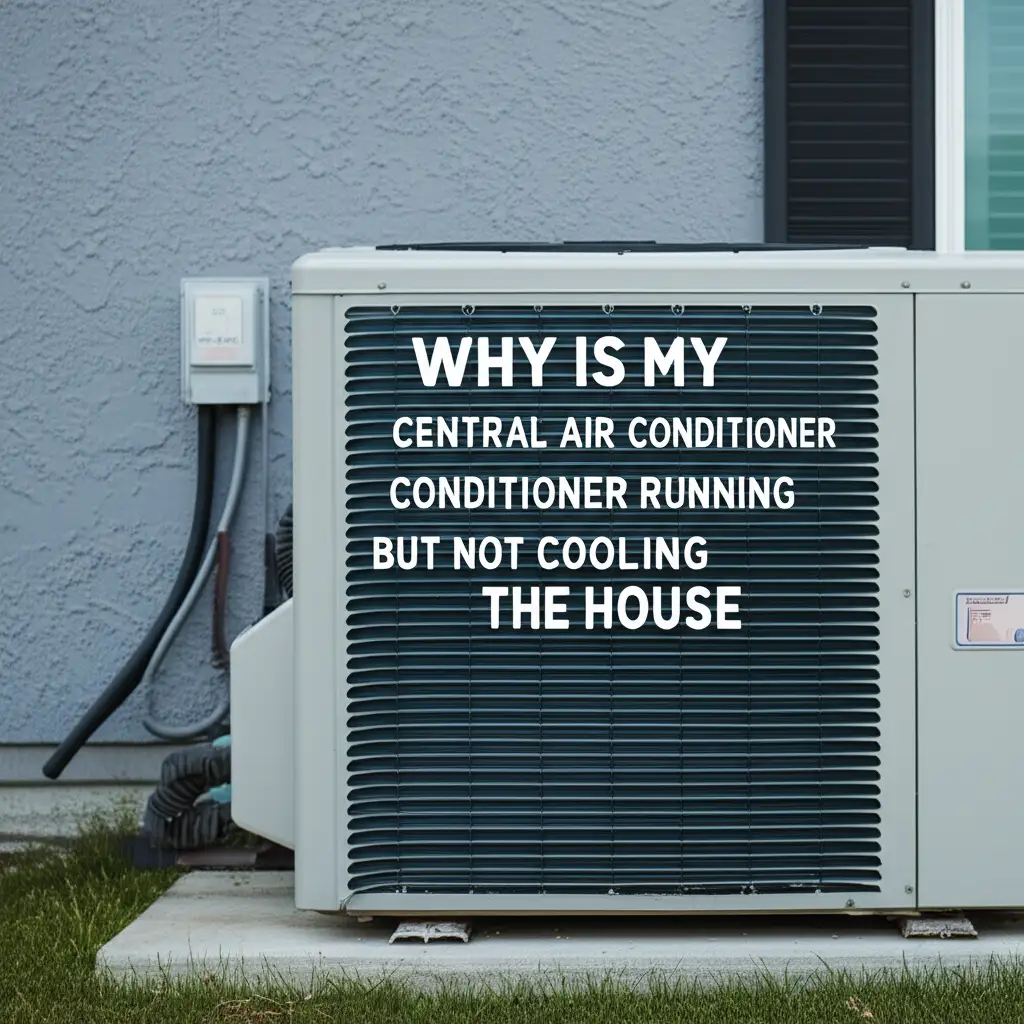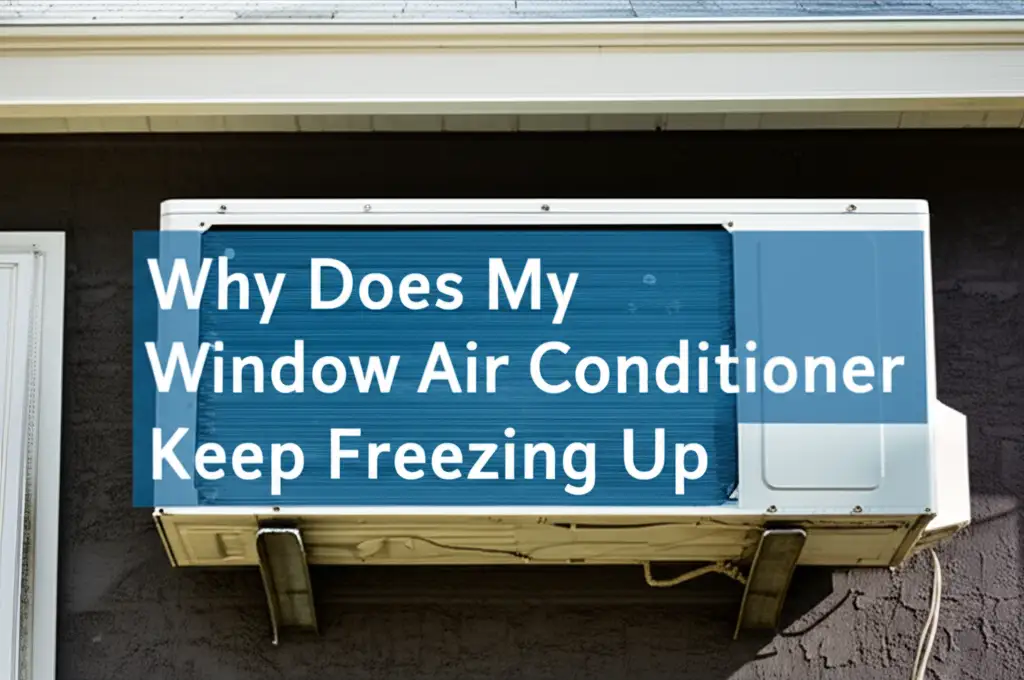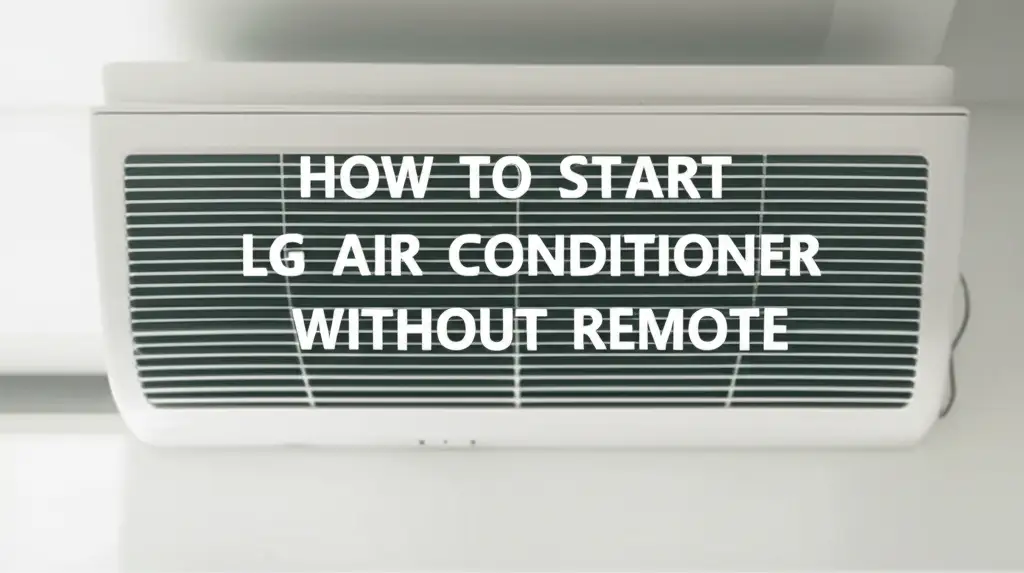· Todd Martin · Air Conditioner Troubleshooting · 20 min read
What Does E4 Mean On Samsung Air Conditioner
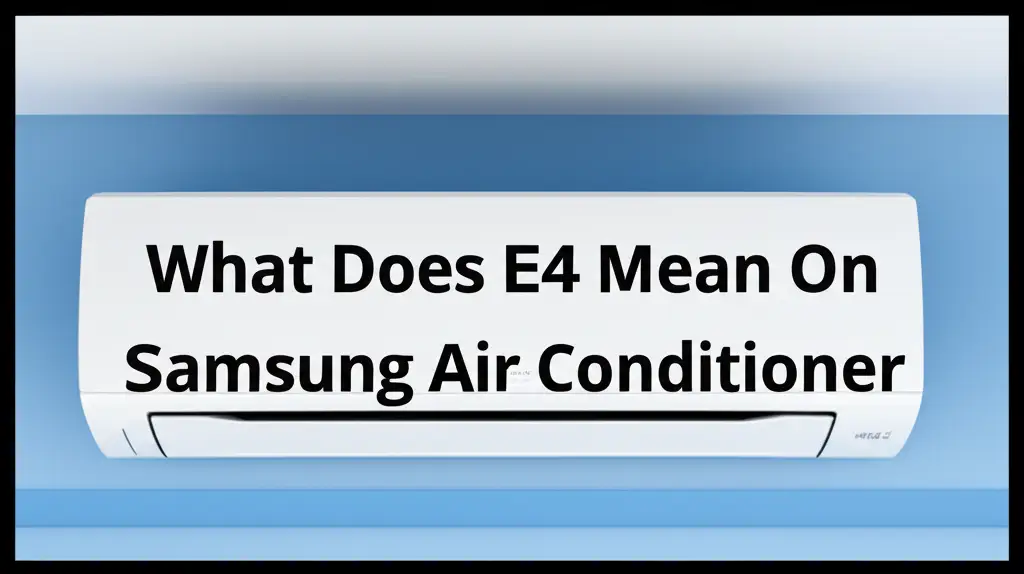
Unpacking the E4 Error on Your Samsung Air Conditioner
Discovering an error code on your Samsung air conditioner can be a bit unsettling. You rely on your AC unit to keep your home cool and comfortable, especially on hot days. When a code like “E4” appears, it stops the cooling process. This code acts as a signal that something is wrong.
This article will help you understand “what does E4 mean on Samsung air conditioner.” We will explore its common causes and provide clear steps to troubleshoot the problem yourself. You will also learn when it is best to call a professional. My goal is to make sure you have the knowledge to fix your AC. Let us make sure your Samsung air conditioner runs smoothly again.
Takeaway:
- The E4 error code on a Samsung AC usually points to a high-pressure issue.
- Common reasons include low refrigerant, a dirty outdoor unit, or a faulty fan.
- You can often fix it by power cycling the unit or cleaning the outdoor coils.
- Always call a professional for refrigerant leaks or complex electrical faults.
The E4 error on a Samsung air conditioner typically indicates a high-pressure issue within the system. This often stems from problems like low refrigerant levels, a dirty outdoor unit, or a malfunctioning outdoor fan or sensor. Addressing these underlying causes helps restore normal operation.
Understanding the E4 Error on Samsung AC Units
When your Samsung air conditioner flashes an E4 error code, it means the system has detected an abnormal high-pressure condition. This condition can trigger a safety shutdown to prevent damage to the compressor and other vital components. The E4 error is not a minor glitch. It shows a significant operational fault within the cooling cycle.
High pressure in an AC system usually happens when the refrigerant cannot dissipate heat effectively. It also occurs when there is an imbalance in the system’s pressure. Your air conditioner’s outdoor unit works hard to release heat. If this process is hindered, pressure builds up inside the lines. The E4 error is the system’s way of telling you to investigate. It protects itself from potential breakdowns. Understanding this core meaning is the first step in diagnosing and resolving the problem. This error can affect cooling performance. For example, if your Samsung air conditioner is not cooling, an E4 error could be the underlying reason.
Sometimes, the unit might even keep turning off as a result of the E4 error. This is a safety mechanism. The system shuts down to prevent damage. This specific code helps service technicians. They can pinpoint the area of concern faster. This makes troubleshooting more efficient.
Common Causes Behind Samsung E4 Error
The E4 error code on your Samsung air conditioner points to a high-pressure problem. Several issues can cause this pressure buildup. Identifying the exact cause is important for a successful repair. Let us explore the most common culprits.
Refrigerant Issues: Low Levels or Overcharge
Refrigerant is the lifeblood of your air conditioning system. It absorbs heat from inside your home and releases it outside. If your refrigerant levels are too low, the system struggles to transfer heat efficiently. This can lead to the compressor working harder. This then increases pressure. Conversely, if too much refrigerant is in the system, it can also cause high pressure. This is because there is not enough space for it to expand and contract properly. Both low and high refrigerant levels disrupt the cooling cycle. They can lead to an E4 error. These issues usually require professional help.
Dirty Outdoor Unit or Coils
Your outdoor unit houses the condenser coils. These coils are crucial for releasing heat absorbed from your home. Over time, dirt, dust, leaves, and debris can accumulate on these coils. This accumulation acts as an insulating layer. It prevents proper heat dissipation. When heat cannot escape, pressure builds up inside the system. A clogged outdoor unit makes your AC work harder. This leads to inefficiency and eventually an E4 error. Regular cleaning of the outdoor unit is important maintenance. You can learn more about how to clean your air conditioner to prevent such issues.
Outdoor Fan Malfunction
The outdoor unit also has a large fan. This fan pulls air over the condenser coils. It helps to cool them down and release heat. If this fan is not working properly, the coils will not cool down enough. This will cause heat and pressure to build up inside the system. A faulty fan motor, bent fan blades, or an obstruction can hinder its operation. If you notice the outdoor fan is not spinning, or spinning slowly, it is a likely cause of the E4 error. This issue directly affects the system’s ability to shed heat.
Pressure Sensor Fault
Your Samsung air conditioner relies on various sensors to monitor its operation. A pressure sensor specifically measures the refrigerant pressure within the system. If this sensor becomes faulty, it might send incorrect readings to the AC’s control board. It could report dangerously high pressure even if the actual pressure is normal. This false reading then triggers the E4 error. Diagnosing a faulty pressure sensor requires specialized tools. A professional technician can test and replace it accurately. This type of fault is less common but can be frustrating.
Compressor Problems
The compressor is the heart of your air conditioning system. It circulates the refrigerant and compresses it. This process increases its temperature and pressure. If the compressor is failing or malfunctioning, it might not be able to regulate pressure correctly. An overworked or damaged compressor can lead to abnormally high pressure. This can trigger the E4 error. Compressor issues are serious. They often require extensive repairs or even a full unit replacement. These problems typically manifest with other symptoms. This includes unusual noises or a complete lack of cooling.
Circuit Board Issues
The control board, or PCB (Printed Circuit Board), is the brain of your Samsung air conditioner. It receives signals from sensors and controls all components. A faulty circuit board might misinterpret sensor data. It could also fail to send correct commands to the compressor or fan. This can lead to system imbalances. This includes high pressure. Sometimes, the board itself might have a defect. This causes it to incorrectly register an E4 error. Diagnosing circuit board issues is complex. It usually requires an experienced technician. They use specific diagnostic tools to identify the problem.
Step-by-Step Troubleshooting for E4 Error
Seeing the E4 error on your Samsung air conditioner can be frustrating. Before calling a technician, there are several troubleshooting steps you can try yourself. These steps address the most common causes of this error. Always prioritize safety when working with appliances.
1. Power Reset Your AC Unit
A power reset is often the first and simplest troubleshooting step for any electronic device. It can clear temporary glitches or false error readings. To perform a power reset, go to your home’s main electrical panel. Locate the breaker switch that controls your air conditioner. Turn it off completely. Wait for about 10-15 minutes. This gives the system time to fully discharge. Then, flip the breaker back on. Turn on your Samsung AC unit. Check if the E4 error code has disappeared. This simple restart often resolves minor communication issues within the unit.
2. Check Indoor Air Filters
While the E4 error is usually related to the outdoor unit, restricted airflow indoors can indirectly affect the entire system’s performance. A clogged indoor air filter makes your AC work harder. This can strain the system. Dirty filters reduce airflow. They also make the indoor coil freeze up. This can indirectly lead to pressure imbalances. Check your indoor air filters. If they are dirty or clogged, clean or replace them immediately. Clean filters ensure proper air circulation. This helps maintain the overall health of your AC system. Regular filter cleaning is a key part of how to clean an air conditioner filter.
3. Clean the Outdoor Unit and Coils
The outdoor unit’s ability to dissipate heat is critical. If its coils are dirty, heat gets trapped. This causes high pressure and triggers the E4 error. First, ensure the power to the outdoor unit is off at the breaker. Remove any visible debris from around the unit. This includes leaves, grass clippings, and twigs. Use a soft brush or a garden hose with low pressure to gently clean the condenser fins. Spray from the inside out to push dirt away. Be careful not to bend the delicate fins. A clean outdoor unit significantly improves your AC’s efficiency. It helps prevent pressure buildup.
4. Inspect Outdoor Fan Operation
The fan in the outdoor unit plays a vital role in cooling the condenser coils. After ensuring the power is off, visually inspect the outdoor fan. Look for any obstructions. This could be branches or other debris stuck in the blades. Carefully try to spin the fan blades by hand. They should spin freely. If they are stiff or wobbly, it might indicate a motor issue. Once you have cleared any obstructions, restore power. Observe if the fan spins normally when the AC is running. If it does not spin at all, or spins slowly, the fan motor might be faulty. A malfunctioning fan cannot cool the coils effectively. This leads to high pressure.
5. Look for Signs of Refrigerant Leaks
While you cannot fix a refrigerant leak yourself, you can look for signs. A leak can lead to low refrigerant levels. This causes the E4 error. Common signs of a refrigerant leak include a hissing sound. This sound might come from the outdoor unit. Another sign is ice formation on the refrigerant lines. These lines connect the indoor and outdoor units. You might also notice a decrease in cooling performance. If you suspect a leak, do not attempt to add refrigerant yourself. Refrigerant is a hazardous chemical. It requires professional handling. Contact a certified HVAC technician immediately for diagnosis and repair.
When to Call a Professional for Samsung AC E4 Error
While some E4 error causes can be addressed with simple DIY troubleshooting, many require the expertise of a qualified HVAC technician. Knowing when to call a professional saves you time, prevents further damage, and ensures your safety. Here are situations where professional help is necessary.
Persistent Error After Basic Troubleshooting
If you have tried all the basic troubleshooting steps—power reset, cleaning filters, cleaning the outdoor unit, and checking the fan—and the E4 error code persists, it is time to call a professional. This indicates a deeper, more complex issue than a simple fix. The problem might involve internal components or intricate system balances. An experienced technician has the diagnostic tools and knowledge to pinpoint the exact cause. They can perform more in-depth tests. These tests are beyond what a homeowner can do.
Suspected Refrigerant Leak
As mentioned earlier, signs like hissing sounds, ice on refrigerant lines, or a significant drop in cooling performance can suggest a refrigerant leak. Refrigerant is a potent chemical that can harm the environment and your health if mishandled. It is illegal and unsafe for homeowners to buy or add refrigerant. If you suspect a leak, you must call a certified technician. They have the proper equipment to detect leaks, repair them, and safely recharge your system. Ignoring a leak can lead to compressor failure. This is an expensive repair.
Compressor Issues
The compressor is the most expensive component of an air conditioning unit. If you hear unusual noises coming from your outdoor unit—such as grinding, banging, or loud buzzing—or if the unit is not producing any cool air despite the fan working, it could indicate a compressor problem. Diagnosing and repairing compressor issues requires specialized knowledge and tools. A professional can determine if the compressor needs repair, replacement, or if the problem lies elsewhere. Attempting to fix a compressor yourself is not advisable.
Electrical Problems
Error codes, including E4, can sometimes stem from electrical issues. This includes faulty wiring, a malfunctioning capacitor, or issues with the control board. Working with electrical components in an AC unit is dangerous if you are not trained. There is a risk of electric shock. A professional technician is trained to safely diagnose and repair electrical faults. They can test components like capacitors, relays, and the PCB (Printed Circuit Board). This ensures safe and proper system operation. They understand the entire electrical system of a Samsung air conditioner better than an untrained individual.
Lack of Specialized Tools
Many AC troubleshooting and repair tasks require specialized tools. These include manifold gauges to measure refrigerant pressure, multimeters to test electrical components, and vacuum pumps. Homeowners typically do not own these tools. Even if you could identify the problem, you might not have the right equipment to fix it. Professional technicians invest in these tools. They also have the training to use them correctly. This ensures a precise diagnosis and effective repair. For example, the E4 error on a Carrier AC is often similar, and might also require professional tools, highlighting that how to fix an E4 error on a Carrier air conditioner also depends on specialized diagnosis.
Preventive Maintenance to Avoid Samsung E4 Errors
Preventive maintenance is key to keeping your Samsung air conditioner running efficiently and avoiding error codes like E4. Regular upkeep can extend the lifespan of your unit. It also ensures consistent cooling performance. Investing a little time in maintenance now can save you significant repair costs later.
Regular Filter Cleaning and Replacement
The simplest yet most impactful maintenance task is regularly cleaning or replacing your air filters. Dirty filters restrict airflow, forcing your AC to work harder. This can lead to increased pressure and potential E4 errors. I make it a point to check my filters every month during cooling season. I clean reusable filters or replace disposable ones every 1-3 months. If you have pets or allergies, you might need to do this more often. Clean filters improve air quality and help your AC run smoothly. This is a very simple and effective step.
Annual Professional Tune-Ups
Just like your car, your air conditioner benefits from annual professional tune-ups. A certified HVAC technician performs a thorough inspection of your unit. They check refrigerant levels, electrical connections, and moving parts. They also clean coils and ensure all components are functioning correctly. This proactive service helps catch minor issues before they escalate into major problems like an E4 error. They can spot early signs of wear or potential pressure imbalances. Scheduling a tune-up before the peak cooling season is always a good idea.
Keeping Outdoor Unit Clear
The outdoor condenser unit needs clear space around it to operate effectively. Obstructions hinder airflow, reducing the unit’s ability to dissipate heat. This can lead to pressure buildup and an E4 error. Regularly clear away leaves, grass clippings, weeds, and other debris from around the unit. Maintain at least two feet of clear space on all sides. Trim back any bushes or trees that are too close. Ensure the top of the unit is free from anything that could block the fan. A clear area allows for optimal airflow and efficient heat exchange.
Monitoring AC Performance
Pay attention to how your air conditioner is performing. Notice any changes in cooling capacity. Listen for unusual noises. Look for strange smells. If your AC seems to be running constantly without reaching the set temperature, or if it cycles on and off too frequently, these are signs of potential issues. Early detection allows you to address problems before they become critical. If you observe any irregularities, refer to your owner’s manual or consider basic troubleshooting. Being proactive about performance monitoring helps prevent future error codes.
Decoding Other Common Samsung AC Error Codes
While our focus is on “What Does E4 Mean On Samsung Air Conditioner,” it is helpful to know that Samsung AC units can display various other error codes. Each code points to a specific issue. Understanding these codes helps you quickly assess the problem. This can guide your troubleshooting efforts.
- E1 Error: This often indicates an indoor unit fan motor error. It means the fan responsible for circulating air inside your home is not working properly.
- E2 Error: Typically related to the indoor unit’s temperature sensor. The sensor might be faulty, providing incorrect room temperature readings to the unit.
- E3 Error: Often points to a communication error between the indoor and outdoor units. This means they are not “talking” to each other correctly.
- E5 Error: This error usually signifies an outdoor temperature sensor error. The unit cannot accurately measure the outside temperature, which affects its operation.
- E6 Error: Frequently indicates an outdoor unit fan motor error. Similar to E1, but it affects the fan that cools the condenser coils outside.
- E7 Error: This can relate to various sensor issues, particularly with the compressor discharge temperature sensor. For example, what E7 means on a Daikin air conditioner can be similar, indicating sensor or communication issues specific to that brand.
- E8 Error: Often indicates an overheating protection error or a compressor overcurrent error. The compressor might be drawing too much power or getting too hot.
- C4 or U4 Error: In some older models, these might also relate to communication issues or indoor unit fan problems.
Each error code acts as a diagnostic tool. It helps you or a technician narrow down the problem area. Always consult your specific Samsung AC model’s user manual. Manuals often provide detailed explanations for each error code. They also offer specific troubleshooting steps. Knowing these codes prepares you for various scenarios. It helps you communicate effectively with a repair technician.
Safety First: Important Considerations When Troubleshooting Your AC
Working with electrical appliances like air conditioners requires careful attention to safety. While troubleshooting the E4 error, it is important to take precautions. Your safety should always be the top priority. Ignoring safety steps can lead to serious injury or damage to your unit.
Disconnect Power Before Any Inspection
Before you touch any part of your air conditioner, especially the outdoor unit, always disconnect its power supply. Go to your home’s main electrical breaker panel. Find the breaker switch that controls your AC unit. Flip it to the “OFF” position. This prevents any accidental startup or electrical shock while you are inspecting components. Do not rely solely on turning the unit off with the remote. A physical disconnect at the breaker is essential for safety.
Wear Appropriate Safety Gear
When working around the outdoor unit or touching internal components, wear appropriate safety gear. This includes work gloves. They protect your hands from sharp fins or edges. Safety glasses are also important. They shield your eyes from dust, debris, or accidental splashes. If you are cleaning coils, a dust mask can prevent inhalation of dirt and mold spores. Protecting yourself from potential hazards is simple. It makes your troubleshooting experience safer.
Do Not Attempt Complex Repairs
Some issues, such as refrigerant leaks, compressor problems, or complex electrical faults, require specialized training and tools. Do not attempt repairs that are beyond your skill level. Trying to fix these problems without proper knowledge can lead to further damage to your unit. It can also cause personal injury. For instance, handling refrigerant incorrectly is dangerous and illegal. Always call a certified HVAC professional for complex repairs. They have the expertise to safely diagnose and fix intricate problems.
Be Aware of Sharp Edges and Moving Parts
Air conditioner units contain sharp metal fins on the coils. They also have fan blades that can cause injury. Be extremely careful when cleaning or inspecting these areas. When the power is on, the fan blades can start unexpectedly. This is why disconnecting power is so important. Move slowly and deliberately. Be mindful of where you place your hands. Taking these simple precautions helps prevent cuts or other injuries. Your awareness keeps you safe throughout the troubleshooting process.
Follow Manufacturer Guidelines
Your Samsung air conditioner’s owner’s manual contains specific safety instructions and troubleshooting tips. Always refer to this manual before attempting any work on your unit. The manufacturer’s guidelines are designed to ensure both your safety and the proper functioning of the appliance. They often provide model-specific advice. This advice can be very helpful for particular error codes. Adhering to these instructions minimizes risks. It also ensures you do not inadvertently void your warranty.
FAQ Section
What is the most common reason for an E4 error on a Samsung AC?
The most common reason for an E4 error on a Samsung AC is a high-pressure issue, often caused by a dirty outdoor condenser unit. When dirt and debris block the coils, the unit cannot release heat effectively. This leads to pressure buildup. Other common causes include low refrigerant or a faulty outdoor fan, which also disrupt the heat exchange process.
Can I fix the E4 error on my Samsung AC myself?
Yes, you can fix some causes of the E4 error yourself. Simple steps like power cycling the unit, cleaning your indoor air filters, and thoroughly cleaning the outdoor condenser coils and fan can often resolve the E4 error. These actions address common blockages and temporary glitches. Always disconnect power first.
How long does it take to fix an E4 error professionally?
The time it takes a professional to fix an E4 error varies depending on the cause. A straightforward cleaning or sensor replacement might take 1-2 hours. If there is a refrigerant leak that requires detection, repair, and recharging, it could take several hours or even involve multiple visits.
Is an E4 error expensive to repair?
The cost of repairing an E4 error depends on the underlying issue. Simple fixes like cleaning can be free if you do it yourself. Replacing a faulty sensor might cost $150-$300. A refrigerant leak repair and recharge can range from $300-$800. Compressor replacement, if needed, is the most expensive, often over $1,000.
Can a dirty air filter cause an E4 error?
While an E4 error primarily relates to the outdoor unit’s high pressure, a severely dirty indoor air filter can indirectly contribute. It restricts airflow, making the entire system work harder and potentially leading to freezing of indoor coils. This can indirectly affect system pressures and overall operation, sometimes triggering errors.
What happens if I ignore the E4 error code?
Ignoring the E4 error code can lead to further damage to your Samsung air conditioner. The E4 error is a safety shutdown. It protects the compressor from high pressure. If the issue is not resolved, the compressor can overheat or fail completely. This results in a very expensive repair or even a full unit replacement.
Conclusion
Encountering an E4 error on your Samsung air conditioner can be a stressful moment. However, understanding “what does E4 mean on Samsung air conditioner” is the first step toward a solution. This error code points to a critical high-pressure issue within your system. It is a protective measure by your unit. It prevents serious damage to the compressor.
You learned that common causes include problems with refrigerant levels, a dirty outdoor unit, a malfunctioning outdoor fan, or issues with pressure sensors and circuit boards. You also have practical, step-by-step troubleshooting methods. These include power resetting your unit, cleaning filters, and maintaining your outdoor condenser. Remember to always prioritize safety when performing any checks. If your efforts do not resolve the E4 error, or if you suspect a refrigerant leak or serious electrical issues, contacting a qualified HVAC professional is essential. Regular maintenance remains your best defense against unexpected error codes. By staying proactive, you ensure your Samsung AC provides reliable, comfortable cooling for years to come. Do not let an E4 error disrupt your comfort; take action and get your Samsung air conditioner back in top shape!
- Samsung AC E4 error
- AC troubleshooting
- Samsung air conditioner repair
- E4 error code
- AC error meanings
- HVAC problems
- refrigerant issues


